PsychoGenics is dedicated to supporting your research and advancing your program with tailored preclinical Angelman syndrome studies.
Angelman syndrome is a neurodevelopmental disorder that emerges early in life, marked by developmental delays, intellectual challenges, and specific behavioral features.
Ube3a Het Mouse Model
PsychoGenics has experience with a heterozygous Ube3a Het knockout mouse model of Angelman Syndrome, which shows similar genotypic and phenotypic characteristics as the human condition, providing insights crucial for the development of effective treatments.
Angelman Syndrome (AS) is a rare genetic neurodevelopmental is most frequently caused by deletion or mutation of the UBE3A gene on the maternal allele of the 15th chromosome. The disease is characterized, in part, by developmental delays, movement impairments, and difficulties with communication and language, the effects of which impact children and adults.
Ultrasonic Vocalizations
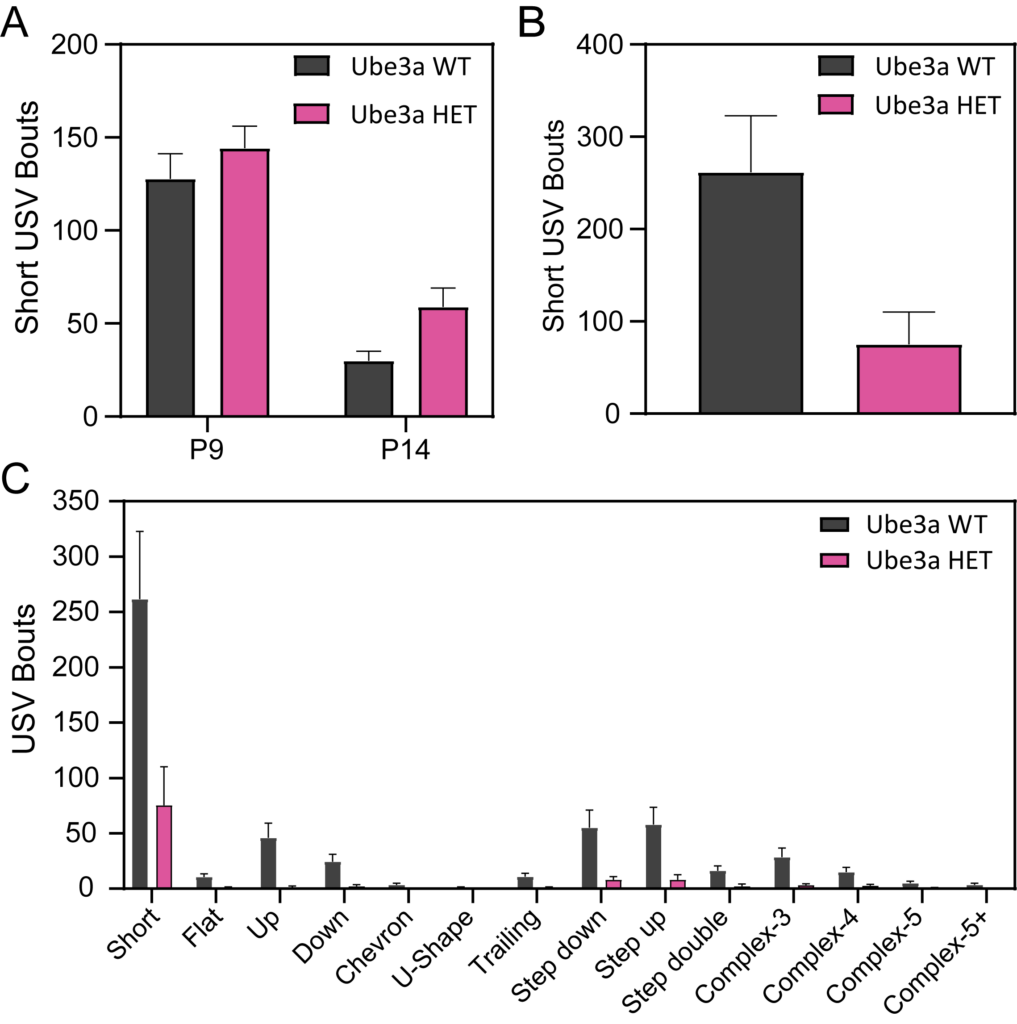
(A) Number of short-duration USV calls at Postnatal day 9 (P9) and 14 (P14). At P14, but not P9, the number of calls was greater in male Ube3a HET mice compared to WT mice. (B) Number of short-duration calls was decreased in 13-week-old Ube3a HET mice compared to age-matched WT mice. (C) Classification of USV calls in 13-week-old male Ube3A WT and HET mice showed that Ube3A HET mice made fewer total USV calls compared to WT. Furthermore, the composition of these calls differed between the genotypes. The majority of the calls in the adult HET animals were short in duration, in contrast to WT animals who exhibited a more diverse and complex vocalization repertoire.
Motor and Muscle Assessment
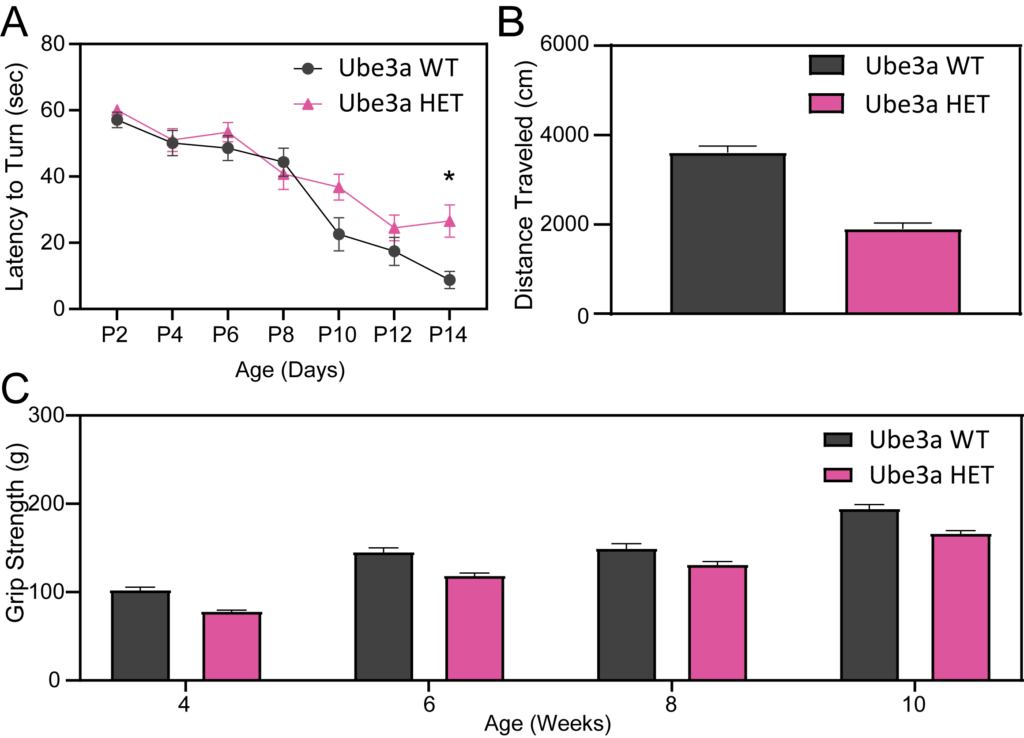
(A) Geotaxis performance in Ube3a WT and HET mice at P2 through P14. The latency to turn was longer in HET mice compared to WT at P14. (B) Performance in the open field at 5 weeks of age. The distance traveled was reduced in the Ube3a HET mice compared to WT. (C) Grip strength performance in Ube3a WT and HET mice at 4 through 10 weeks of age. Grip strength was lower in the male Ube3a HET mice compared to their WT counterparts at all ages tested.
EEG Profile
Time spent in W, NREM and REM in the Light and Dark Phases
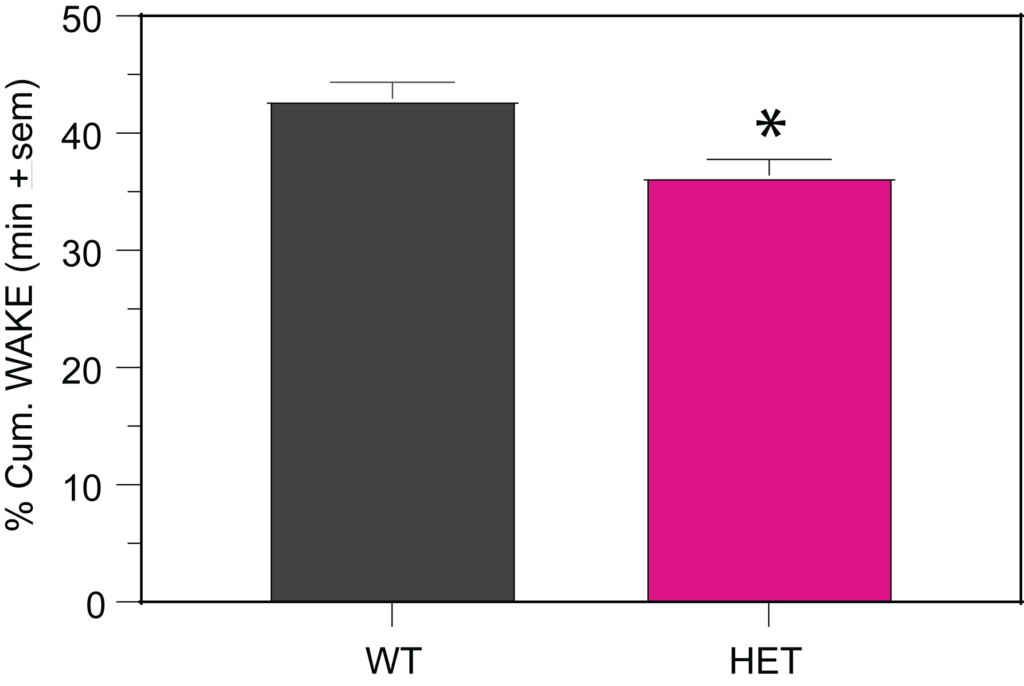
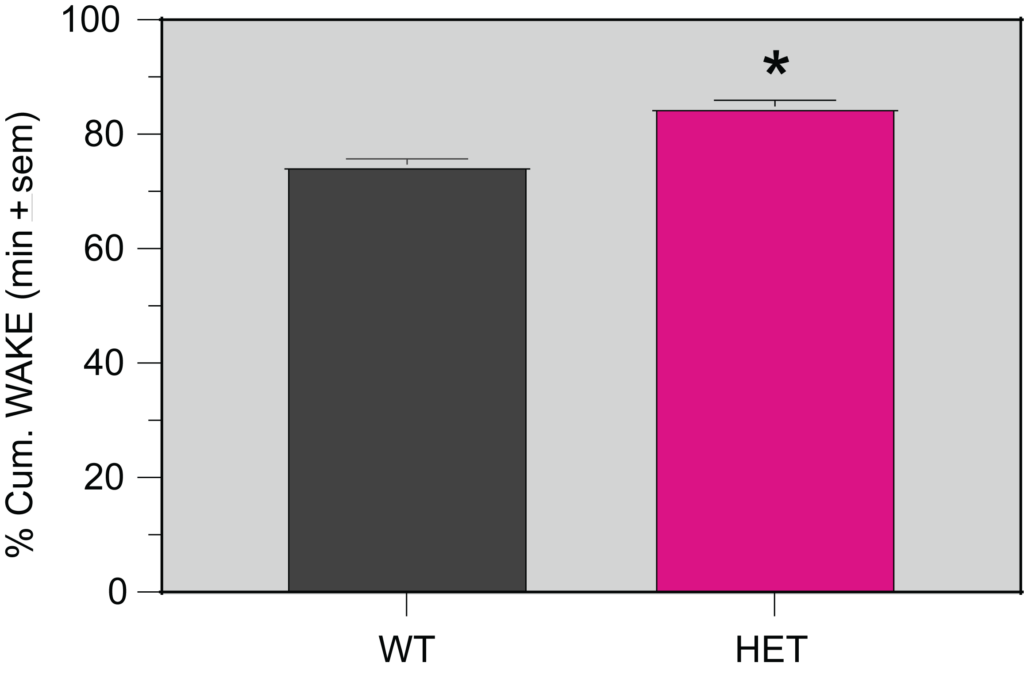

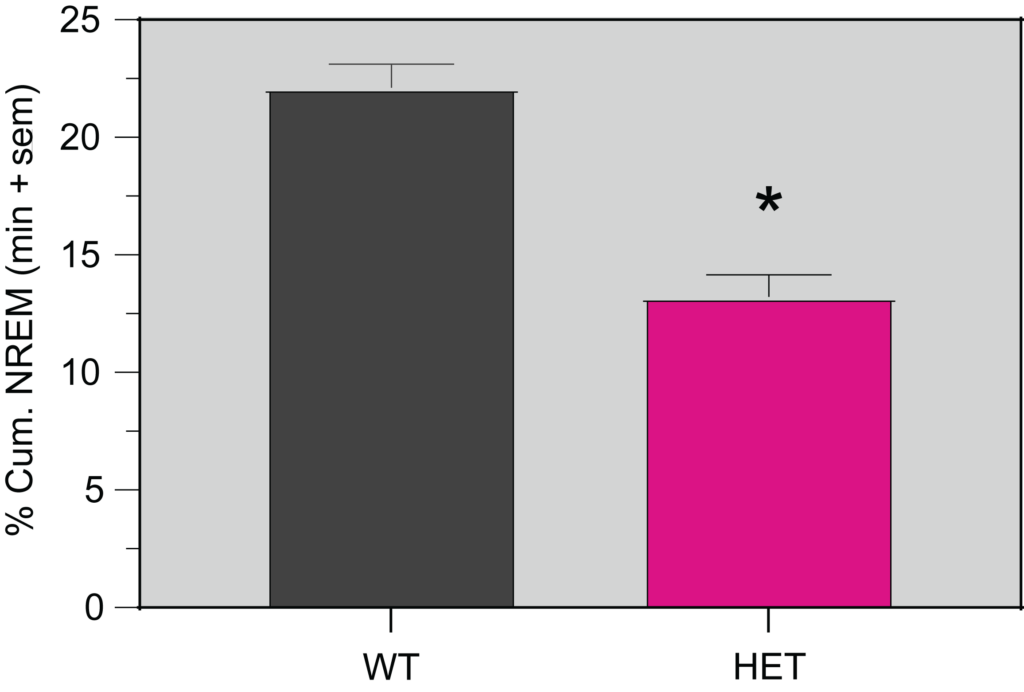

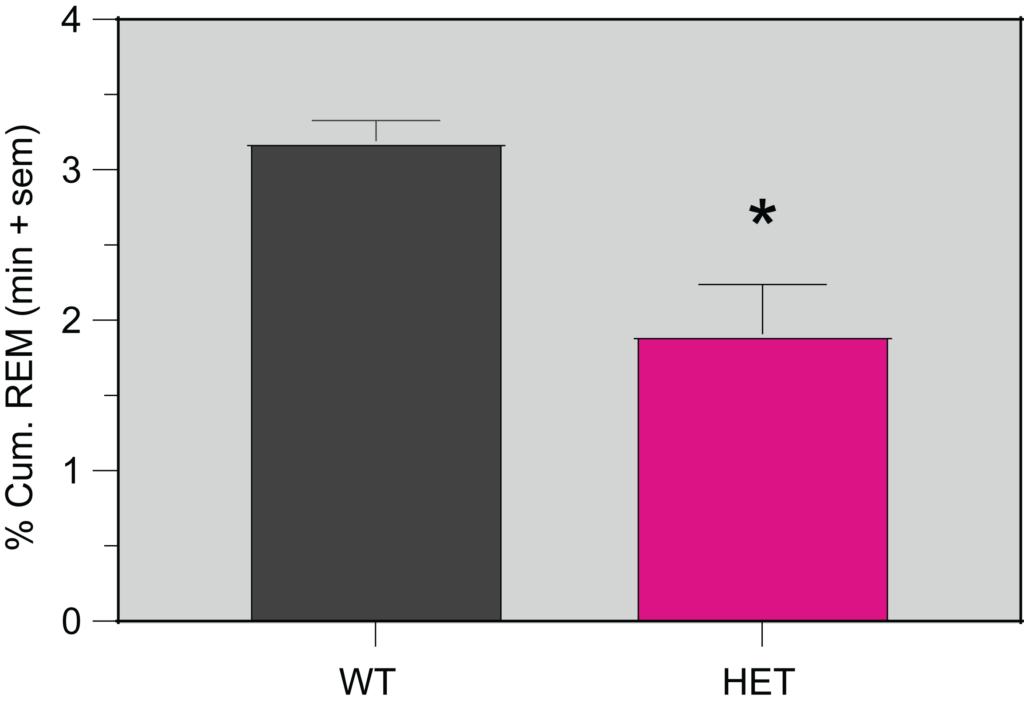
During the light phase, Ube3a Het mice spent less time awake and more time in NREM and REM sleep compared to WT littermates.
During the dark phase, Ube3a Het mice spent more time awake and less time in NREM and REM sleep compared to WT littermates.
Aberrant Waveforms

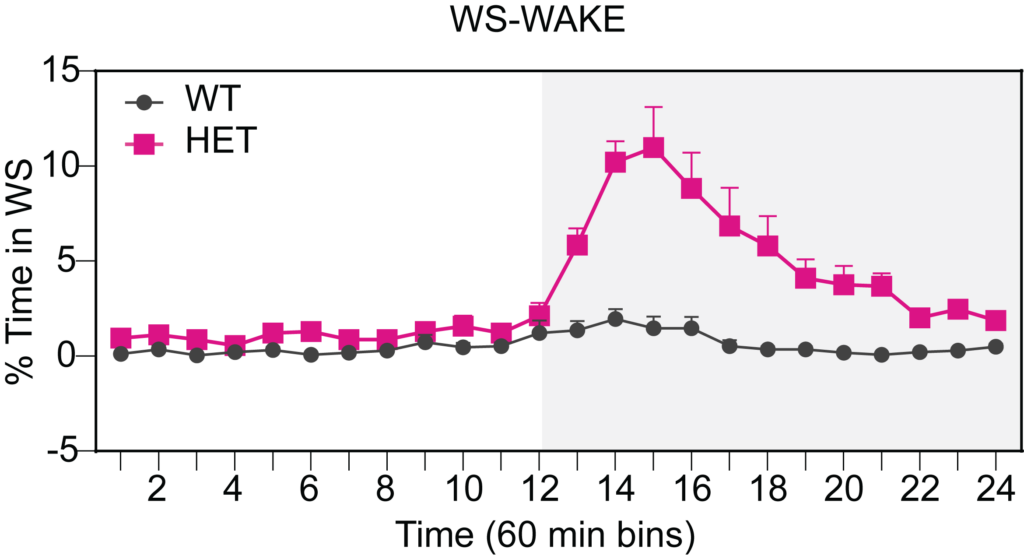
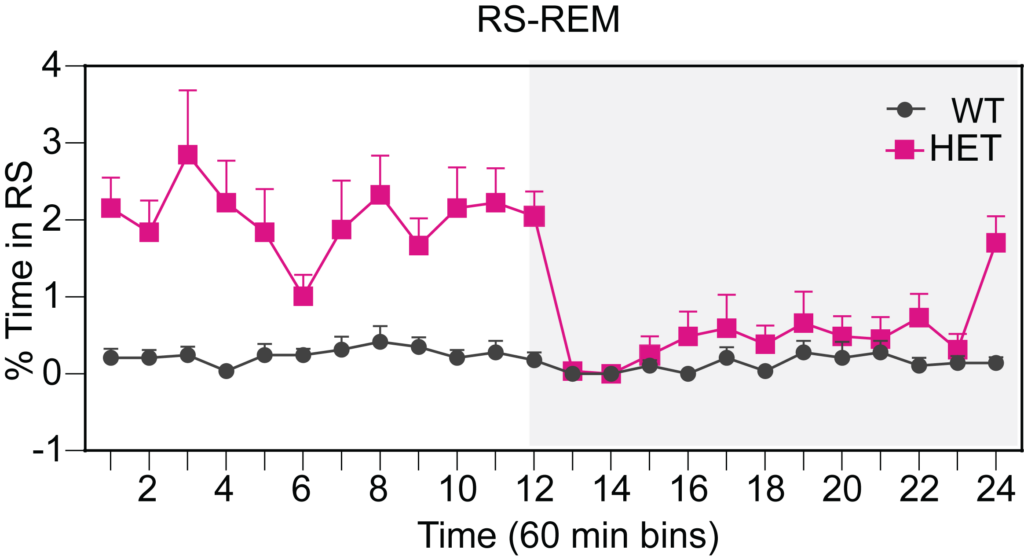
Ube3a Het mice have multiple seizure types. Three types are reported on here. The top panel represents the expression across the 12/12 hour light/dark cycle of one seizure type labeled “SS”. SS is a non-motor seizure that is found only during waking and is seen in both the frontal and parietal channels. The expression of SS has little variation across the light/dark cycle. The middle panel represents the expression another seizure type labeled “WS”. WS is also a non-motor seizure that is found only during waking but is seen only in the frontal channel. WS occurs more during the dark phase compared to the light phase. The bottom panel represents the expression another seizure type labeled “RS”. RS is also a non-motor seizure that is found only during REM sleep and, like WS, is seen only in the frontal channel. RS occurs more during the light phase compared to the dark phase.
Utilizing EEG in Preclinical Angelman Syndrome Studies
Electroencephalography (EEG) can play an important role in preclinical Angelman syndrome studies, and our team recognizes the immense value of the EEG as a powerful translational tool for assessing sleep/wake patterns and detecting abnormal EEG patterns associated with the disorder.
Our neurodevelopmental disorders areas of expertise: